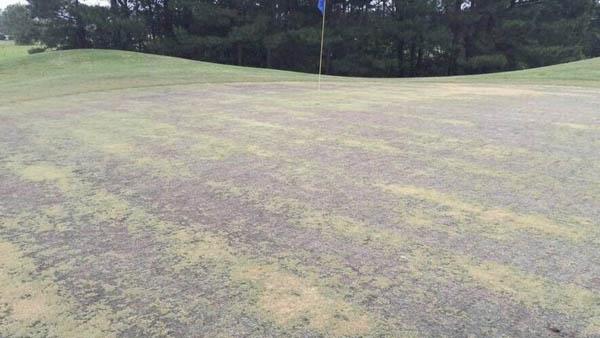
In 20 years as a turfgrass pathologist at Clemson University, Bruce Martin, Ph.D., has seen a lot. A lot of good and a lot of bad.
He hasn't seen anything like what he has this year in coastal South Carolina. That includes nearly three weeks of low temperatures below freezing in January in Myrtle Beach (the average is about 10 days, according to the National Weather Service).
The outcome is predictable at golf courses that have not invested in greens covers.
Martin said he estimates 20 percent to 30 percent of the courses in the Myrtle Beach area have experienced some turf loss this winter.
"This is the coldest I've seen ultradwarfs exposed to here since I've been here at Clemson. And that's been 20 years.
"I've visited quite a few golf courses that did not have covers," Martin said. "It's not a total wipeout, and if nothing changes they will be OK. But it's been a long, cool spring. We haven't had any Bermudagrass-growing weather yet, so these courses are open for play, but the Bermuda isn't actively growing. Conditions can only go in one direction - downhill. It's going to take quite a while for the Bermuda to come back in many areas."
Damage is so widespread that Bill Anderson, agronomist for the Carolinas Golf Association jokingly quipped at a recent meeting that he'd visited 50 courses in Myrtle Beach this spring, and 75 of them had shade issues.
By and large, Martin said, courses with covers did OK. Those that incorporated a second layer of protection, like pine straw, did even better, especially in late winter when average daily temperatures, according to the NWS were 3-4 degrees below the historic mean for March.
"You need another buffer between the cover the turf," Martin said. "It was really cold in January, then it warmed up in February and the Bermuda broke dormancy, then it got hammered back down with frost.
"A lot of guys don't like pine straw because it's hard to clean up, but it's better than dead grass."
Some superintendents also are incorporating the use of swimming pool noodles to at least create an air pocket between the cover and the turf.
Some areas will grow back on their own, but some of the areas with the worst turf damage could require sprigging new plant material.
Martin and Anderson of the Carolinas Golf Association warn that a run on organic material could result in a shortage of plant material.
Overseeding is another matter entirely, and the after effects won't be clear for some time, according to Martin.
"The ones who did overseed, they're looking pretty sweet right now," he said. "If they do have trouble with the Bermuda, they won't see it until June during transition. This is their high-dollar season right now, so if they're good now and have damage later, they'll gladly pay that bill. But if you have damage now, golfers will go elsewhere. Maybe a few more people will opt to overseed in the future. Covers are cheaper in the long run than overseeding. They're like insurance, you buy it hoping you never have to use it. If need them, you have them. If you don't need them, great, then you don't have transition problems, because there are always some transition issues."

